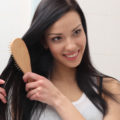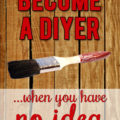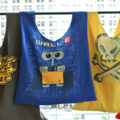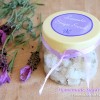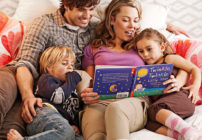As parents, we cherish every moment of our child’s growth, but there comes a time when we must acknowledge that our baby is no longer a baby.
One of the most significant signs of this transition is when the babyproof bedroom isn’t suitable anymore. Your child can stand up in their crib and has started climbing out of it, or if they no longer need the baby monitor, it’s time to transform their space into a young child’s bedroom.
The Child Bed: Making the Transition
Crib beds, although cozy, are no longer suitable once your child begins to outgrow them. Interestingly, many cribs are designed to grow with your child and can convert into toddler beds that can last until they are six or seven. However, if your crib doesn’t have this feature, it’s time to consider a new bed.
A young child’s bed is different from a crib in several ways. Firstly, it does not have crib bars, allowing your child to climb in and out comfortably. The mattress is usually low to the ground, making it easy for your child to manage. The length of the bed is also longer, often approaching the size of a grown-up bed to accommodate your child’s growth.
For added fun and personalization, consider beds shaped like cars, pirate ships, or castles. These creative designs not only make bedtime more exciting but also help in transitioning from the crib, as your child will be eager to sleep in their new, cool bed.
Age-Appropriate and Developmental Toys
As your child grows, so do their interests and developmental needs. It’s time to replace the baby toys with ones that are more suitable for a young child. Ditch the light displays above the bed and instead opt for toys that support their developmental stages.
Toys with letters, such as those that spell out their name or teach them the alphabet like toys letter I for kids whose names start with an I, are excellent choices. These toys help in developing literacy skills from an early age. Counting toys, such as simple puzzles or blocks, encourage early math skills. Additionally, toys that promote motor skills, like building sets or art supplies, are perfect for this age group.
Investing in toys that cater to their growing curiosity and learning abilities will not only keep them entertained but also aid in their cognitive and motor development.
A Space for Creativity and Learning
Another important addition to a young child’s bedroom is a small desk. This space can serve multiple purposes and become a central spot for various activities. A desk can easily replace the old changing table and provide a place for your child to engage in creative and educational play.
At their desk, children can color, paint, and even try finger painting, which helps in developing fine motor skills and creativity. It’s also a perfect spot for reading, touching, and looking at age-appropriate books. As they grow older, this desk can be a place for doing homework or watching educational games and shows on tablets.
Having their own workspace fosters a sense of independence and responsibility. Ensure that the desk and chair are child-sized to provide comfort and accessibility.
Transforming a baby bedroom into a young child’s bedroom is an exciting milestone that reflects your child’s growing independence and changing needs. You can create a space that supports their development and nurtures their growing curiosity and independence.
Related Posts
- 7 Common Baby Health Issues And How To Treat Them
As a new parent, it can be worth knowing about some of the common health…
- 8 Proven Ways To Bond With Your Baby
I can't believe that my little one is 3 months old already! I still remember…
- Is Your Baby At Risk Of Heat Rash This Winter?
Image Credit: Pexels, Free to Use Licence. Heat rash is often associated with the warmer…

